Anyone ever seen a Dempsey with a nuchal hump?
- Thread starter Deadeye
- Start date
no but I have not seen every fish  My male has a slight change in his head where a nuchal hump would be but its not a nuchal hump. I have never seen a picture where a jd male had anything larger than my males forehead. Just like jags I dont believe they get nuchal humps either.
My male has a slight change in his head where a nuchal hump would be but its not a nuchal hump. I have never seen a picture where a jd male had anything larger than my males forehead. Just like jags I dont believe they get nuchal humps either.
I'd have to agree. Even my original Jack I had, which was 14in at 10years old, didn't have a kok on his forehead. If anything he just looked like he had a hunch back from how large he was. Wish I would've taken pics of him before he passed away otherwise I'd show ya how beastly he was lol.no but I have not seen every fishMy male has a slight change in his head where a nuchal hump would be but its not a nuchal hump. I have never seen a picture where a jd male had anything larger than my males forehead. Just like jags I dont believe they get nuchal humps either.
Reviving this because it looks like there’s at least some nuchal hump development in my Jack:
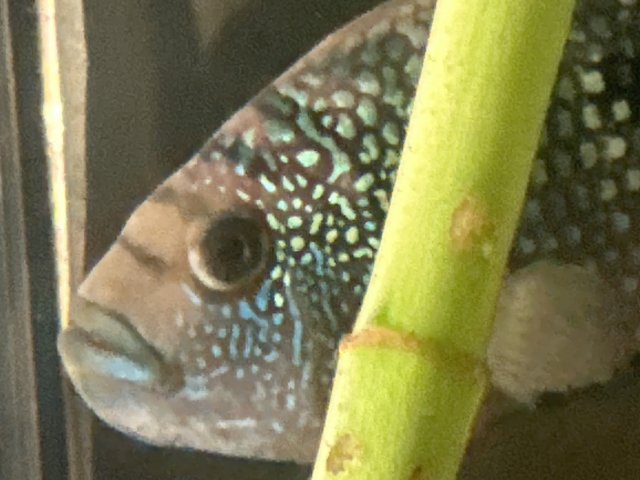
Nothing crazy, but definitely bigger than I’ve seen in the past:
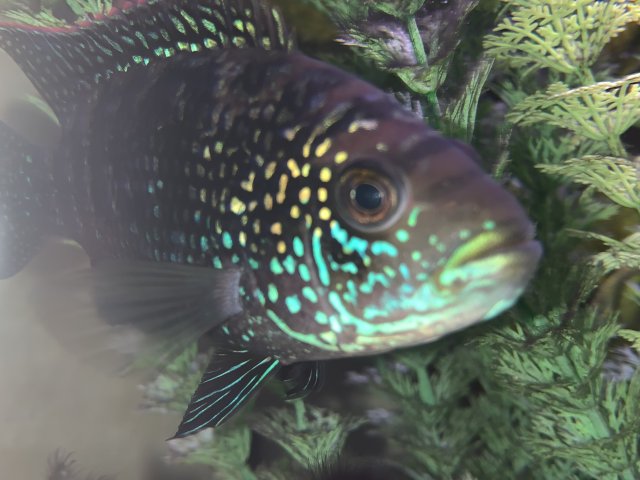
Traditionally he has a much sharper snout but it’s recently started looking more “swollen.” I don’t really expect it to get any bigger, but figured it was worth mentioning.
Maybe he’s just been hitting his head too hard…

Nothing crazy, but definitely bigger than I’ve seen in the past:

Traditionally he has a much sharper snout but it’s recently started looking more “swollen.” I don’t really expect it to get any bigger, but figured it was worth mentioning.
Maybe he’s just been hitting his head too hard…
I've seen some old males in the Cenotes of Mexico where the hump is quite bulbous and large.
They were usually at least 10".
In those Cenotes up welling water from the aquifers below put them in almost constant 100% water change.
They were usually at least 10".
In those Cenotes up welling water from the aquifers below put them in almost constant 100% water change.
That's funny. A couple of days ago someone (else) told me JDs (among some other species) "tend to get eaten by things once they hit the 5" mark" as an argument that said species (including JDs) are mostly in the 5-6 inch range-- I could have gotten into a debate, but I was busy with more important things... and I'm getting too old to debate every opinion I disagree with.I've seen some old males in the Cenotes of Mexico where the hump is quite bulbous and large.
They were usually at least 10".
Last edited:
In my videos its pretty obvious most JDs we see, are small in size, and the ones that get large are few and far between.
I remember one large , old individual ( about 10") was living within and defending a mouth of a cave area where birds of prey were not common, and/or easily avoided.
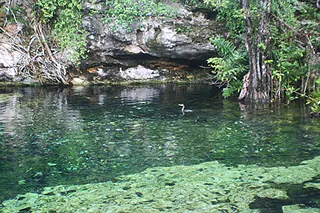
These individuals are the exception to the rule, so I don't see any conflict here.
I also recall seeing some of the largerst mollies I've ever seen, in these deep cave areas.
When I'd see these large mollies they were also living at depths of 10ft or more, unlike most others.
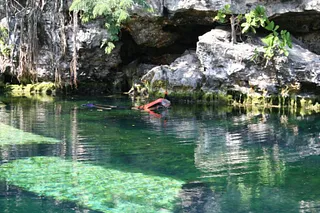
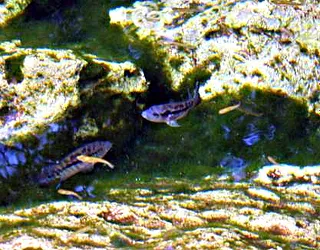
It is the same with the M. uropthalmus in Cenotes.
Where most live in shallower areas size is typical, and what I consider moderate, and that is what we see.
The largest and most dominant live in deep areas they jealously guard from other less dominant individuals, and I'd only catch glimpses of.
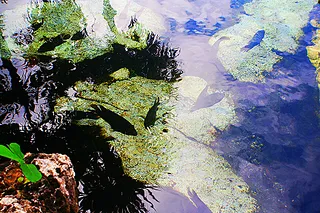
I remember one large , old individual ( about 10") was living within and defending a mouth of a cave area where birds of prey were not common, and/or easily avoided.

These individuals are the exception to the rule, so I don't see any conflict here.
I also recall seeing some of the largerst mollies I've ever seen, in these deep cave areas.
When I'd see these large mollies they were also living at depths of 10ft or more, unlike most others.


It is the same with the M. uropthalmus in Cenotes.
Where most live in shallower areas size is typical, and what I consider moderate, and that is what we see.
The largest and most dominant live in deep areas they jealously guard from other less dominant individuals, and I'd only catch glimpses of.

That's often the case, the percentage of older, large fish is relatively small and some locations have larger specimens of a species than others. But that was my point, exactly, average wild size doesn't define a size limit for wild fish.These individuals are the exception to the rule, so I don't see any conflict here.
I also recall seeing some of the largerst mollies I've ever seen, in these deep cave areas.
When I'd see these large mollies they were also living at depths of 10ft or more, unlike most others.
I've seen this all the time fishing. For example, I did a lot of trout fishing when I lived in Colorado for ten years, several times per week in the summer. It was very typical to find that native trout would be different sizes in different locations. The most common example was brook trout, larger ones in most places were 6-8 inches, depending on the location, now and then a bit larger, maybe 9 or 10. But this was far from their max size and I could catch them 16-20 inches in a couple of places I knew, caught one 24 inches once (and let him go). Average size is one thing, max size in an ideal location is often something else.
It's not just prey fish, also predators. A lot of them get eaten when they're small, only a certain percentage survive to reproduce, a smaller percentage live to old age and maximum sizes, and sizes you catch in one location can differ significantly from another. An "average" northern pike is what, 15-20 inches? But they can get over 4 ft.

In the book "Cichlids from Central America" by Ad Konings, he posits an interesting theory.
That a successful spawn in nature occurs, when only 1 individual (of say 1,000 eggs) survives to maturity.
And he uses Parachromis managuense in one of the Nicraguan lakes as his theoretical test subject.
Its no surprise, young fish are preyed upon by everything from insects, and crustaceans, to small birds.
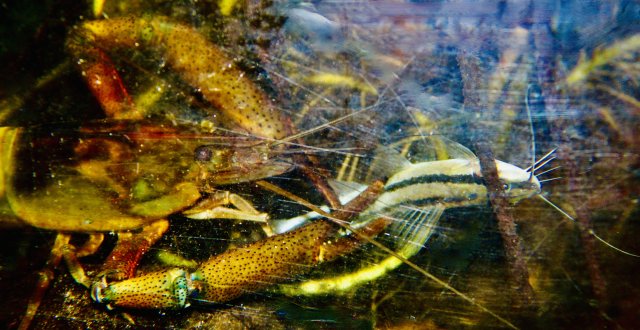
The catfish above, being eaten by the shrimp is about 3" - 4"
The larger the fish get, to a certain point, the smaller their pool of predators become.
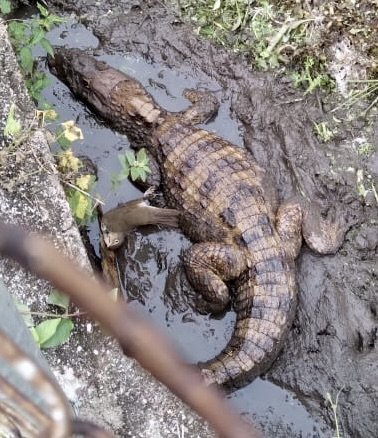
In aquariums managuense size norm might average only 10-12" , and I have seen some aquarists poo poo the idea that under the right they can easily hit 18 to 20 inches.
But I have had some in my tanks, easily hit 16"and not be done growing, and the record for hook and line fishing is 22"
Last edited:
Reminds me of an old thread I posted, that for some bizarre reason turned into a pics or it didn’t happen debate. LolThat's often the case, the percentage of older, large fish is relatively small and some locations have larger specimens of a species than others. But that was my point, exactly, average wild size doesn't define a size limit for wild fish.
I've seen this all the time fishing. For example, I did a lot of trout fishing when I lived in Colorado for ten years, several times per week in the summer. It was very typical to find that native trout would be different sizes in different locations. The most common example was brook trout, larger ones in most places were 6-8 inches, depending on the location, now and then a bit larger, maybe 9 or 10. But this was far from their max size and I could catch them 16-20 inches in a couple of places I knew, caught one 24 inches once (and let him go). Average size is one thing, max size in an ideal location is often something else.
It's not just prey fish, also predators. A lot of them get eaten when they're small, only a certain percentage survive to reproduce, a smaller percentage live to old age and maximum sizes, and sizes you catch in one location can differ significantly from another. An "average" northern pike is what, 15-20 inches? But they can get over 4 ft.
20 inch ex-Cichlasoma festae
Many thanks to Windsor Aguirre, Assistant Professor, Deptartment of Biological Sciences, DePaul University for the following information. Windsor & his research team study the native freshwater fish of Western Ecuador. In their listing for Cichlasoma festae they had 50 cm listed as the...











